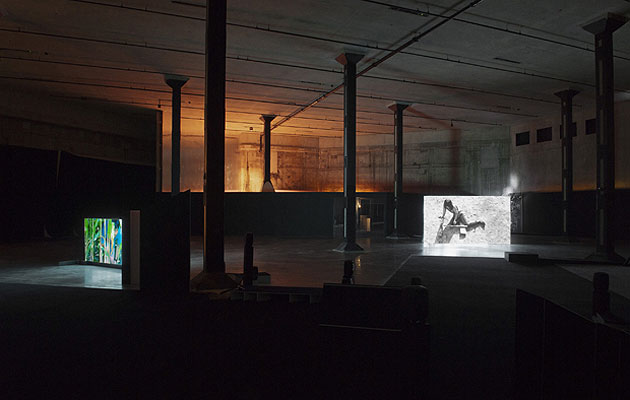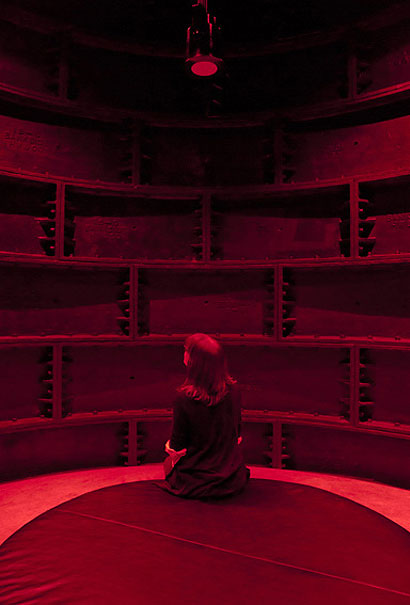|
|
||
|
It’s hard to overestimate how successful the Tate Modern has been. Since opening in the shell of Sir Giles Gilbert Scott’s Bankside Power Station in 2000, Herzog & de Meuron’s conversion has become the world’s most popular gallery of modern and contemporary art. Around it, nearly everything has changed. The building, once surrounded by quotidian Southwark, is now enveloped by shiny (perhaps gaudy) office and residential blocks, including neighbouring work by Richard Rogers. Soon, however, the Tate itself will have an addition, as Herzog & de Meuron is working on a large extension to the south of the building, currently visualised as a faceted tower with a skin of perforated bricks, drawing on the gloomy quasi-classicism of the original. This extension, the Tate Modern Project, is not due to complete until 2016, but in the meantime the gallery has temporarily opened phase one of the scheme: the Tanks. “The world’s first museum galleries permanently dedicated to exhibiting live art, performance, installation and film works” inhabit a series of three massive tanks in which the oil for the power station was once stored, in the area beneath where the extension will eventually be. The Tanks are entered from the floor of the vast Turbine Hall, the sublime space that has become the visual trademark of the gallery worldwide. The space within the Tanks is far more bunker-like than anything in the original project. There is rough concrete everywhere, with stains and old signs, truncated staircases and platforms that seem to belong to a floor above, now removed. All the remaining beams and columns are thuggishly oversized, but have been joined by a series of smooth columns at a rake angle, which will rise up to become the frame for the extension. From this super-patinated lobby, a series of heavy, black steel doors lead into each of the tanks: which are vast, dark halls (the largest more than 30m across) strewn with columns. Much has been made about the changes in art consumption and production that the Tanks supposedly represent, with Tate director Sir Nicholas Serota saying: “In a moment of relative austerity, people are rethinking values and looking again at the work that doesn’t play to the market.” It might be difficult to take this promo-speak, which takes two separate phenomena and asserts a topical causal link, seriously. But with a programme that mixes events of significance in the history of performance art with opportunities for young artists to have their work performed at such a prominent venue, it ought to have a positive effect. There’s something about the Tanks that gives this impression – instead of the mannered vastness of the main building, this new space feels more like a scaled-up version of the archetypal artist-run gallery in a dilapidated former industrial unit. So while Herzog & de Meuron’s recent Serpentine Pavilion feels slightly anachronistic in a world of pop-ups, the Tanks are more like the institutionalisation of a well-established, but nebulous, typology.
|
Image Tate Photography
Words Douglas Murphy |
|
|
||



















